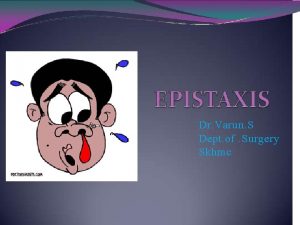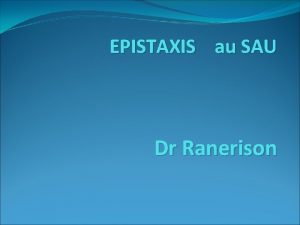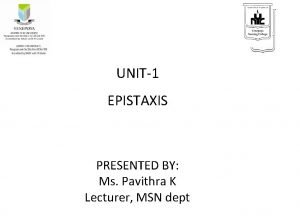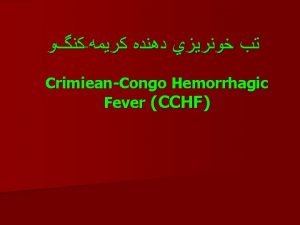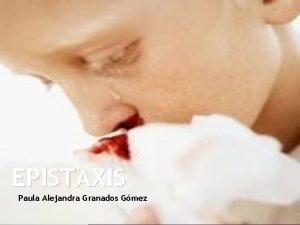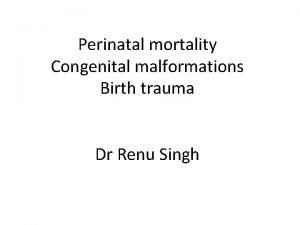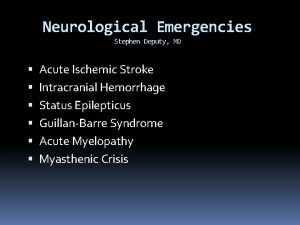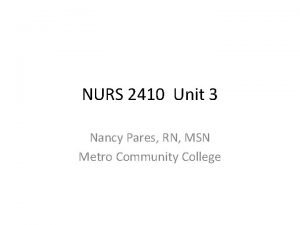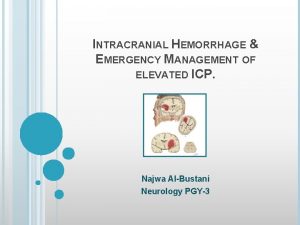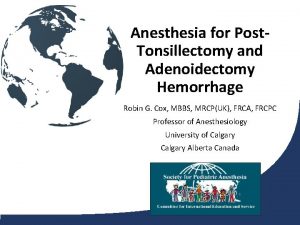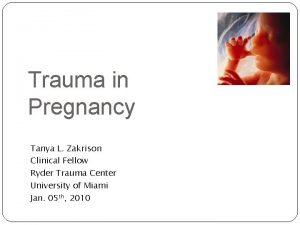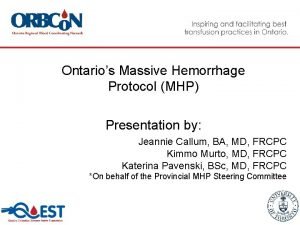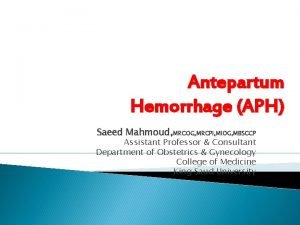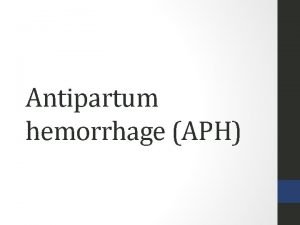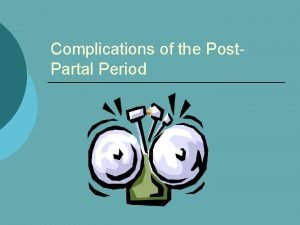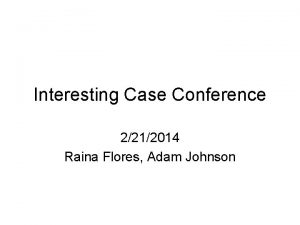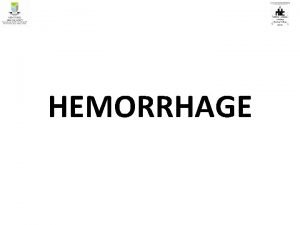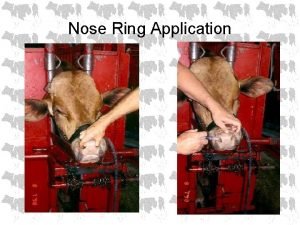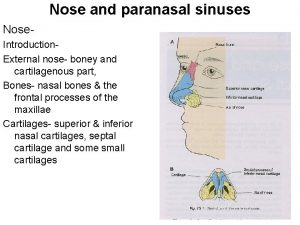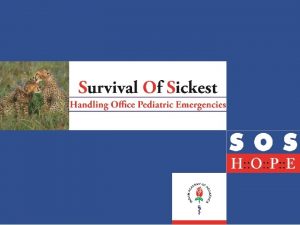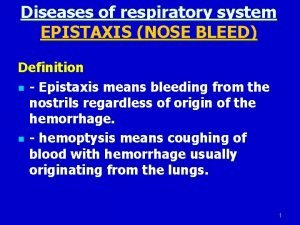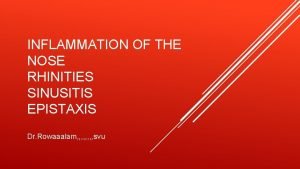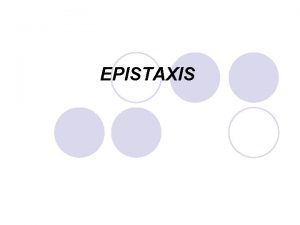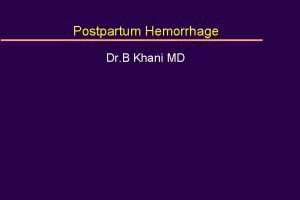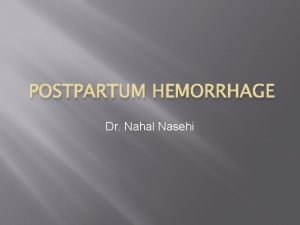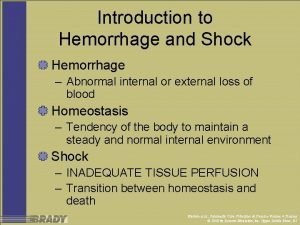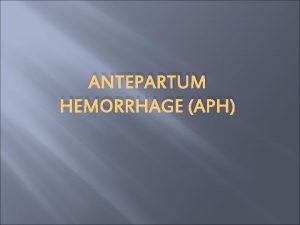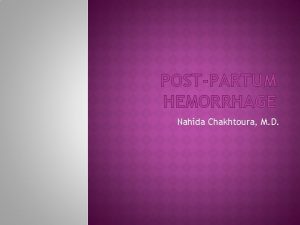Epistaxis Epistaxis is a hemorrhage from the nose


















- Slides: 18

Epistaxis

Epistaxis is a hemorrhage from the nose caused by the rupture of tiny, distended vessels in the mucous membrane of any area of the nose. Epistaxis is another name for what is commonly known as nose-bleeds Occurs up to 60% of general population, but rarely leads to massive bleeding and death

Most cases of epistaxis occur in the • sources of epistaxis 1. 1. Anterior (more common) 2. 2. Posterior (typically common among old patients) anterior part of the nose, in which bleeding usually arises from the Kiesselbach’s plexus. Posterior epistaxis generally arises from the posterior nasal cavity via branches of the sphenopalatine arteries. Such bleeding usually occurs behind the posterior portion of nasal cavity. In most cases, anterior bleeding is clinically identified. Posterior bleeding may be asymptomatic or may present insidiously as nausea, hematemesis, anemia, hemoptysis, or melena.

Little’s area

Causes Many different causes – locally, systemically, and environmentally Environmental causes include allergens and humidity Can also be idiopathtic

Common local causes Chronic sinusitis Epistaxis digitorum (nose picking) Foreign bodies Intranasal neoplasm or polyps Irritants Medications - topical corticosteroids Rhinitis Trauma

Common systemic factors Hemophilia Hypertension Leukemia – there will be lack of platelet Medications – anticoagulants and NSAIDS Platelet dysfunction/Thrombocytopenia

Treatment Flow of blood normally stops when the blood clots. To encourage blood clotting - Pinch the upper fleshy part of nose - Do so for 5 -20 minutes - Tilt head forward can decrease the chance of nausea and airway obstruction from swallowing blood - Vasoconstrictive agents can also be used - Nasal packing (anterior and posterior)

• Anterior nasal cavity is packed Bayonet forceps from posterior to anterior with ribbon gauze that has petroleum jelly • Bayonet forceps and a nasal speculum can be used to approximate ACCORDION FOLDING of gauze • Each Anterior nasal cavity packing layer should be pressed down firmly before next layer is added Nasal speculum


Packing of the anterior nasal cavity using gauze strip impregnated with petroleum jelly. A. Gauze is gripped with bayonet forceps and inserted into the anterior nasal cavity. B. With a nasal speculum, the first packing layer is inserted along the floor of the anterior nasal cavity. Forceps and speculum then are withdrawn. C. Additional layers of packing are added in an accordion-fold fashion, with the nasal speculum used to hold the positioned layers down while a new layer is inserted. Packing is continued until the anterior nasal cavity is filled. Packing should be removed in 48 -72 hours

• Done by Otolaryngologist • A catheter is passed through the nostril and through the nasopharynx and out the mouth • A gauze pack is at the end of the catheter • The gauze pack is guide through the mouth and into the posterior nasal cavity Packing for posterior epistaxis

Posterior nasal packing. A. After adequate anesthesia has been obtained, a catheter is passed through the affected nostril and through the nasopharynx, and drawn out the mouth with the aid of ring forceps. B. A gauze pack is secured to the end of the catheter using umbilical tape or suture material, with long tails left to protrude from the mouth.

C. The gauze pack is guided through the mouth and around the soft palate using a combination of careful traction on the catheter and pushing with a gloved finger. This is the most uncomfortable (and most dangerous) part of the procedure; it should be completed smoothly and with the aid of a bite block to protect the physician’s finger. D. The gauze pack should come to rest in the posterior nasal cavity. It is secured in position by maintaining tension on the catheter with a padded clamp or firm gauze roll placed anterior to the nostril. The ties protruding from the mouth, which will be used to remove the pack, are taped to the patient’s cheek.

Other treatments Balloon packing Cauterization of blood vessel - Laser therapy Gauze sponge pack


Prevention Cooler house Vaporizer to return humidity and moisture to the air Avoid picking the nose or blowing the nose too vigorously. Do not strain to bend down or lift anything too heavy.

Nursing management Avoid vigorous exercise Avoid hot and spicy foods Avoid tobacco – tobacco can cause vasodilatation Avoid forceful nose blowing, straining, high altitudes, nasal trauma Adequate humidification Teach how to apply direct pressure with the thumb and index finer for 15 min
 What is the bridge of the nose
What is the bridge of the nose Nose
Nose Couterise
Couterise Mérocel
Mérocel Pathophysiology of epistaxis
Pathophysiology of epistaxis Cchf
Cchf Epistaxis causas
Epistaxis causas Locus kiesselbach
Locus kiesselbach Waiter's tip deformity
Waiter's tip deformity Stephen deputy md
Stephen deputy md Homan signs
Homan signs Osmotherapy
Osmotherapy Types of hemorrhage after tonsillectomy
Types of hemorrhage after tonsillectomy Tanya zakrison
Tanya zakrison Hemorrhage
Hemorrhage Hemorrhage
Hemorrhage Antipartum hemorrhage
Antipartum hemorrhage Postpartum hemorrhage treatment drugs
Postpartum hemorrhage treatment drugs Raina flores sex
Raina flores sex


